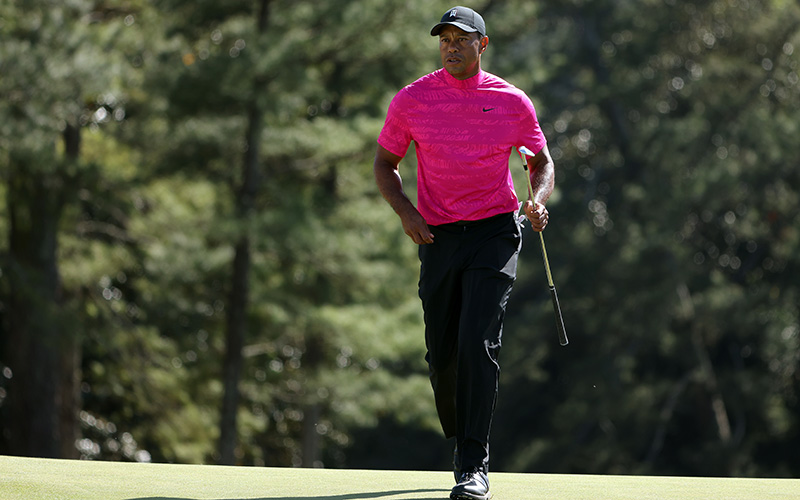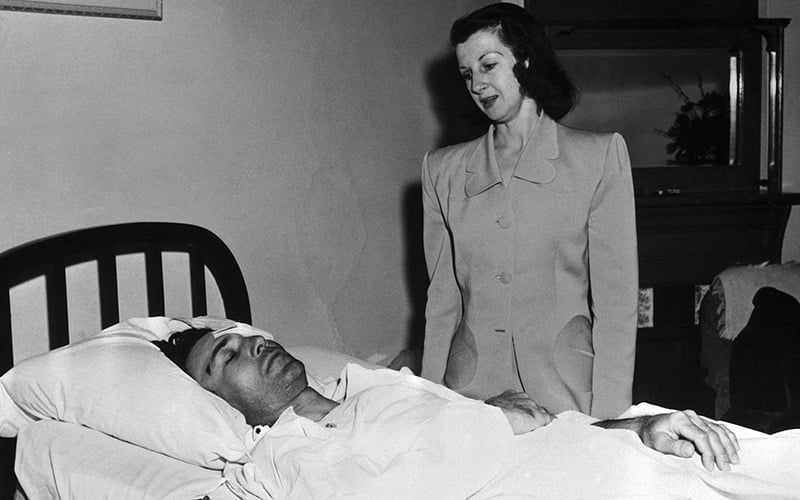PHOENIX – On April 14, 2019, the world witnessed Tiger Woods pull off one of the greatest comebacks in sports history at the Masters.
Now 46, with a nearly fatal car crash and devastating leg and back injuries in his rear view mirror, Woods hopes to shock the world one more time.
It’s been done before.
Nearly 75 years ago, Hall of Famer Ben Hogan came back from a life threatening car accident on his way home from the Phoenix Open to defy the odds and become a champion again.
“Over the years, sports fans and people who would be considered sports aficionados have considered it probably the greatest comeback of all time by an individual,” said John Davis, former Arizona Republic golf reporter and member of the Arizona Golf Hall of Fame.
It was February 2nd, 1949, when Hogan, who would eventually win nine majors, dove to protect his wife, Valerie, in the passenger seat of their Cadillac, from a bus hurling towards them on an icy road in Texas, Golf Digest reported.
The couple were on their way home from the Phoenix Open, then played at the Phoenix Country Club, where Hogan had just lost in an 18-hole playoff to Jimmy Demaret, and he nearly lost his life on the way.
The crash caused the car’s engine to ram straight into the driver’s seat, which Hogan evaded when he dove to protect his wife. It took over an hour to get Hogan out of the wreck, and even longer for the medics to arrive at the scene.
He suffered a broken collarbone, broken rib, internal bleeding, double-fractured pelvis, head abrasions, a broken ankle and contusions to the left leg. Doctors wondered if Hogan would ever walk again, if he survived.
Until the early 1950s, airbags for vehicles didn’t exist. Many who sustained these types of injuries in crashes wouldn’t survive. But in cases like Hogan, the more people that survived these traumatic incidents forced the medical field to discover ways to treat serious injuries.
At the time, “treatment for pelvic fractures was pretty primitive,” said Dr. Braiden Heaps, a Chandler orthopedic surgeon who specializes in operative and nonoperative treatment of sports injuries. Surgery for pelvic fractures was still decades away (operations weren’t performed until the 1980s), and the main remedy was bed rest.
Medical professionals since have learned that prolonged bed rest isn’t good for overall health of the body.
“Now, the treatment and the concepts, the technology for it is so advanced that a pelvic fracture in isolation is no longer a ‘fatality event,’” Heaps said.

Although he played well in the first round, Tiger Woods acknowledged simply walking was a challenge during Masters competition Thursday. (Photo by Jamie Squire/Getty Images)
Hogan spent almost 60 days in a hospital in El Paso, where he experienced complications with blood clots in his leg and his lung. A specialist had to be brought in from Tulane Hospital to perform surgery on Hogan.
Due to the surgery that was needed to fix the problem, Hogan dealt with pain in his legs along with circulatory issues.
For a man who had just been elected “Golfer of the Year” in 1948, it seemed as if his career was over.
After months of watching on the sidelines as a spectator and rigorous rehab, Hogan played 18 holes for the first time in December of ‘49.
Hogan somehow returned to competition just a month later at the Los Angeles Open (now named the Genesis Invitational, which is organized by the Tiger Woods Foundation).
Astonishingly, he managed to finish second overall after a full 72 holes, plus an 18-hole playoff with Sam Snead. He painstakingly battled all weekend just to come up short.
But the impossible dream of winning again was viewed as much more possible.
In June of 1950, at the U.S. Open, Hogan won the tournament in another 18-hole playoff against Lloyd Mangrum and George Fazio. The match was nicknamed “the Miracle in Merion” for what Hogan accomplished that day.
“It was recognized, way back then, as being absolutely remarkable,” Davis said.
Hogan would go on to win five more major championships in his career, including three in 1953 alone.
Some of the events resemble what Woods is facing.
The 83rd annual Masters tournament saw Woods take back the glory he’d lost to public scrutiny and injury over the previous 10 years when he won it for the fifth time in his career.
Thousands who watched in person and the millions around the world gave metaphorical fist pump, that Tiger had made so famous over his career, when the ball dropped in the hole on the 18th green.
Because he was 43 at the time and battling injuries, many were skeptical that he could find success again.
“I never said there was no chance because I know Tiger,” Davis said.
Davis, who covered Woods during the height of his career, said, “I’ve seen him do so many incredible things.”
To say that Tiger is one of the most resilient athletes of all time wouldn’t be that big of a stretch. The toll his body and mind have taken over his career is significant. He’s won a major championship on a torn ACL, and he’s had a plethora of surgeries on his legs and back coupled with the procedures done following the car crash in February of last year.
“For him to come back and play in this Masters 14 months later is really pretty astonishing,” Davis said.
The major injuries Woods sustained in the accident were comminuted fractures to his right tibia and fibula. Comminuted fractures are when the bone has breaks in multiple areas, requiring either a plate and screws to be put in, or a titanium rod straight through the bone.
Both the injury itself along with the rehab process can be “pretty brutal,” according to Dr. Braiden Heaps, who specializes in operative and nonoperative treatment of sports injuries.
“Just to heal the bone can take up to three months or longer,” Dr. Heaps said.
That’s just for the bone to heal. The rehab itself can be another six to eight months on top of that for “getting your range of motion back, getting your strength back, and getting endurance,” Heaps said.
The biggest issue with these kinds of injuries for golfers is finding the ability to swing with as much power and force without pain as possible. Major components of a consistent and powerful golf swing are in the legs, hips and core.
So, when dealing with injuries to those specific areas, rehabilitation to the fullest extent is crucial.
“Retaining your full ability to swing pain free with the same level of torque takes time, and it takes difficulty,” Heaps said.
“And it doesn’t happen for everyone, truthfully,” he added.
Anyone who knows the story of Ben Hogan knows better than most that these obstacles can be overcome.
Odds are good that Tiger Woods knows that, too. But after Thursday’s first round, when he finished 1-under par and just 4 strokes back the leader, he was elated.
“I am as sore as I expected to feel, but it was amazing. … My adrenaline will kick in,” he told reporters in Augusta. “I’ll get into my own little world, and I’ll get after it. It’s about the training that we’ve done to have the stamina to go.”


